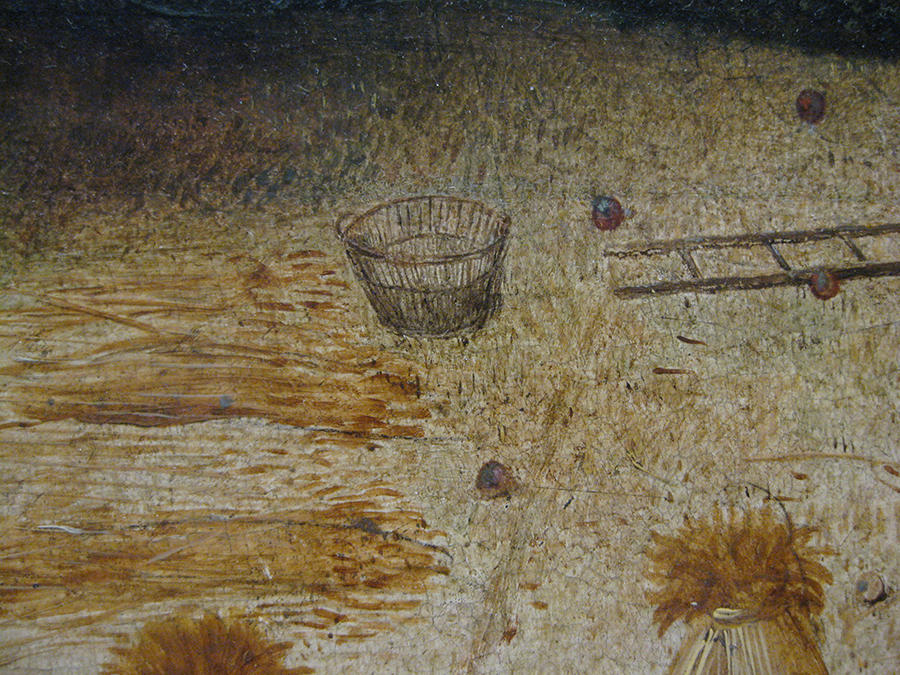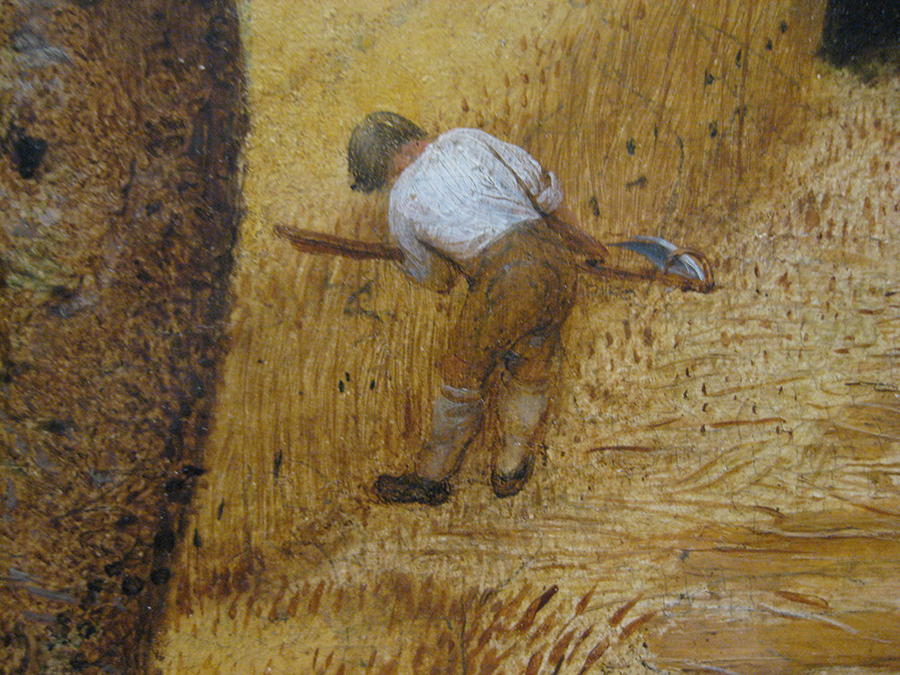I had intended to have a transparent background on the current painting I am working on, but I got it too dark, and once that happens with a transparent background the only option to lighten it is to paint over it with opaque paint. Below you can see the painting with the transparent background and the beginning stages of the opaque background I painted over it.
painting with transparent background
I had painted the transparency around the sides of my gallery wrap canvas. I’m leaving the sides transparent because I like how it looks. You can see if values were divided, with black being 0, and white being 10, this would be about a value 3. I had intended the background to be a sky and a value 3 was too dark for the sky to look luminous, at least not for me for this painting.
Here is how the painting looks now, with the beginning stages of the opaque background. I am going to blend the background into a mostly smooth gradation.
You can see that the light side is now about a value 7.
The dark side is about a value 5 but it’s hard to tell in this picture because the value strip is catching a bit more light.
Here’s the opaque paint I mixed for this. I will mix some in between values to paint the gradation.
This experience of getting my background too dark made me think of a blog entry I had been intending to write about the use of transparent layers of paint. Using transparent paint for backgrounds, or more accurately, for the “underpainting”, or the first layer of paint, is a longstanding tradition in painting, particularly before the impressionists. The impressionists started a new style of using thick paint over the entire surface, often in just one thick layer. But before the impressionists, oil painters tended to paint in thin layers, building up the layers slowly, and, as I wrote, leaving some of the first transparent layers showing. I generally work in this old, pre-impressionist technique.
You can see this use of transparent painting very well in Rembrandt paintings. His shadows are usually transparent brown. Then the lights are painted with opaque paint. Having the white canvas shine through the transparent paint creates a very beautiful, luminous, stain glass- like effect, and this beauty, I assume, is why it became a traditional technique. And it saved paint, probably important back in the days when pigments were expensive and artists had to prepare and make their own paint.
Two other painters who used beautiful under paintings were Pieter Bruegel and Hieronymus Bosch. In this detail of a Hieronymus Bosch painting below, the first layer of paint was the the lower whitish sky, which is a transparent layer. This probably covered the whole surface. Then he gradated the blue in at the top, also with transparent paint. He then painted the buildings on the horizon with a paint color from the sky. Then at some point he added another mostly transparent layer to create the color of the yellow hills in the foreground. Continuing to work mostly transparently, he now built up all the details. At the end he used opaque paint for the final details, such as the blades of the windmill and the leaves of the trees. Since these details are light over dark, only opaque paint would work. Except for these few opaque details, the whole painting is almost like a watercolor painting done with oils, in the sense that the whole painting mostly transparent paint.
Hieronymus Bosch. the first layer of paint was the white sky, which is almost a value 10, that is, almost pure white. For realism skies need to be very light. The transparency with the white surface shining through makes the sky luminous and glowing. A mistake amateur painters often make is painting their skies too dark. The old masters knew better!
Pieter Bruegel's painting The Harvesters, painted 50 years or so later in 1565, is built up using the exact same technique.
Pieter Bruegel's painting The Harvesters, detail. This photo I took myself at the Metropolitan Museum in New York, where this painting resides. I was very interested to see close up how he applied the paint. You can see how transparent the paint is and how he used brush strokes with thin paint to add texture to the ground. The wheat is painted very thinly too. From a distance it creates a very convincing realistic effect.
Pieter Bruegel's painting The Harvesters, detail. In this detail above the only really opaque paint is the white shirt and some black textural brush strokes.
In these paintings they had to be very careful not to get the transparency too dark, like I did on my Unicorn painting. Even if they had had enough money for pigment to cover the whole surface with opaque paint, it wouldn’t have been nearly as beautiful.
In this painting contemporary German artist Michael Sowa uses traditional pre impressionist technique including transparent underpainting. The brown transparent background was painted 1st and is the same underpainting as seen in the soup. This adds unity to the painting and makes it more beautiful, and in this case works nicely to create the effect of a wet reflective surface, since the soup is reflecting the background wall.
This portrait is also by Michael Sowa. The technique is very Rembrandt like. The green transparent background was painted first. you can see it showing through the dress on the shadow side.
I hope now that you’ve read this, when you look at paintings in a museum or art gallery, you will begin to notice where painters have left transparent backgrounds showing through and see the beauty it adds to the painting.













